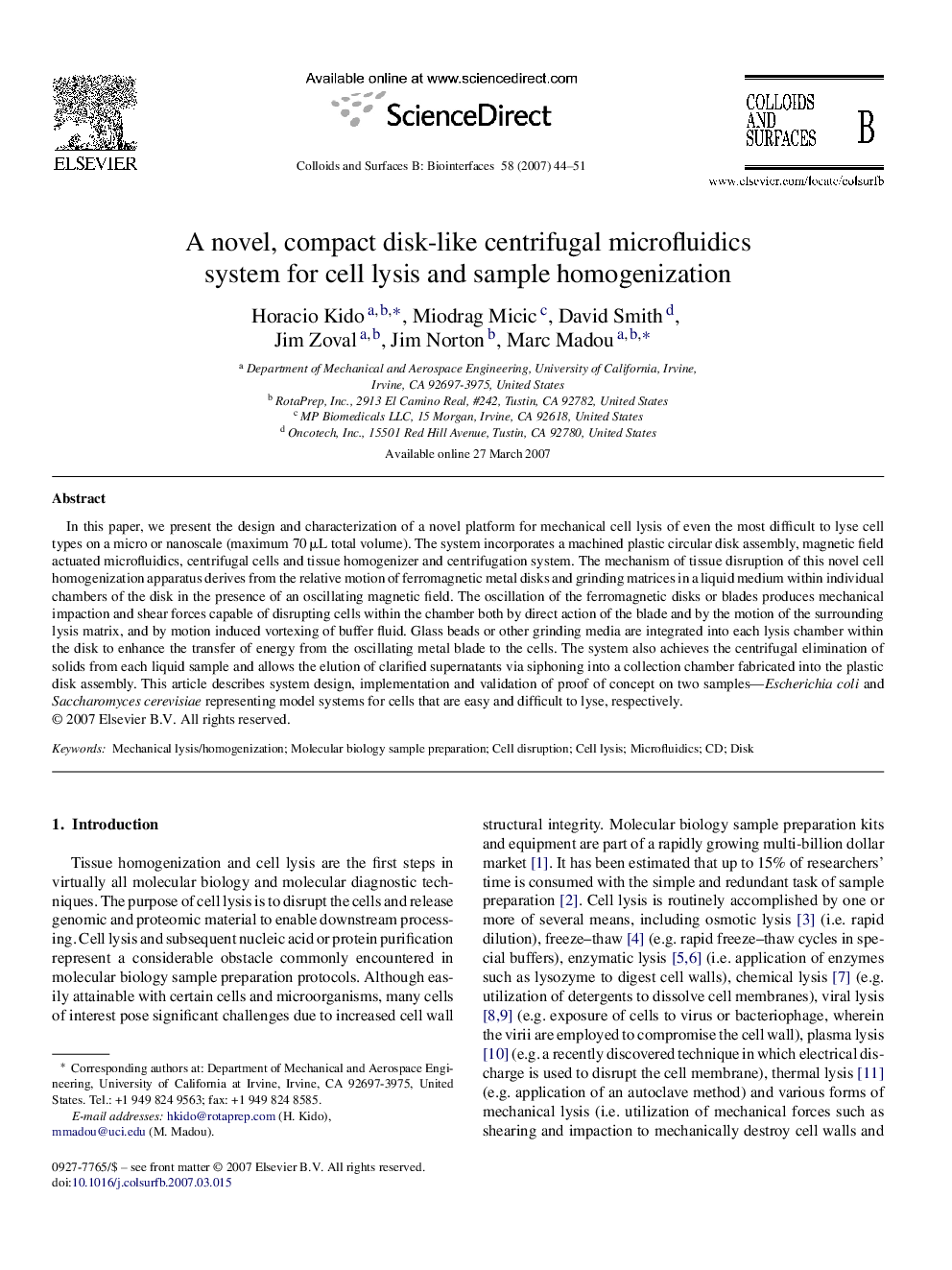| Article ID | Journal | Published Year | Pages | File Type |
|---|---|---|---|---|
| 602971 | Colloids and Surfaces B: Biointerfaces | 2007 | 8 Pages |
In this paper, we present the design and characterization of a novel platform for mechanical cell lysis of even the most difficult to lyse cell types on a micro or nanoscale (maximum 70 μL total volume). The system incorporates a machined plastic circular disk assembly, magnetic field actuated microfluidics, centrifugal cells and tissue homogenizer and centrifugation system. The mechanism of tissue disruption of this novel cell homogenization apparatus derives from the relative motion of ferromagnetic metal disks and grinding matrices in a liquid medium within individual chambers of the disk in the presence of an oscillating magnetic field. The oscillation of the ferromagnetic disks or blades produces mechanical impaction and shear forces capable of disrupting cells within the chamber both by direct action of the blade and by the motion of the surrounding lysis matrix, and by motion induced vortexing of buffer fluid. Glass beads or other grinding media are integrated into each lysis chamber within the disk to enhance the transfer of energy from the oscillating metal blade to the cells. The system also achieves the centrifugal elimination of solids from each liquid sample and allows the elution of clarified supernatants via siphoning into a collection chamber fabricated into the plastic disk assembly. This article describes system design, implementation and validation of proof of concept on two samples—Escherichia coli and Saccharomyces cerevisiae representing model systems for cells that are easy and difficult to lyse, respectively.
